IT Resources | NC State OR

IT Resources
Last Updated: 02/17/2025 | All information is accurate and still up-to-date
Need Help?
The ISE Helpdesk is here to support you with any tech issues.
Software Resources
NC State University offers you a wide variety of software for free or at a reduced rate.
First, explore the links below to find the software you need. Then, download the software directly from the provided links.
- NC State College of Engineering Licensed Software – Available Software licensed via COE/OR
- NC State University Licensed Software – Available Software licensed via NC State
- OnTheHUB Discounted Software for OR – Free and/or discounted software available to STEM majors
- Microsoft Azure Dev Tools for Teaching – Free access to MS Dev Products and Azure Credits
- ISE Grammarly License Request Form – Request a license to fully-featured Grammarly
Still can’t find the software you need? Complete the Software Request Form, or please contact the ISE Helpdesk at isehelp@ncsu.edu.
Remote PC Access Instructions
As a student, staff or faculty member, you can work remotely on your ISE-owned campus computer. First, complete the Request Remote PC Access Form to get permission for remote access. After approval, use Microsoft’s Remote Desktop Protocol (RDP) when working off-campus. You must first log in to NC State’s Virtual Private Network (VPN) to connect successfully. This step ensures a secure connection to your office machine. Following these steps allows you to access your work computer from anywhere.
STEP 1: VPN (for off-campus access)
- Go to the VPN Installation Instructions page and log in using your UNITY ID and password.
- Follow the instructions to install the AnyConnect Secure Mobility Client on your remote computer.
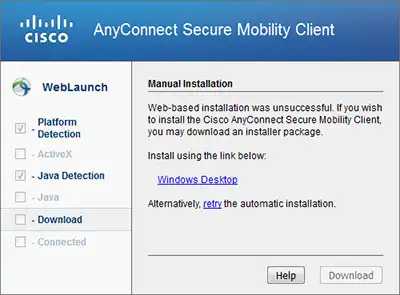
- Once installed, make sure to connect to “vpn.ncsu.edu.”
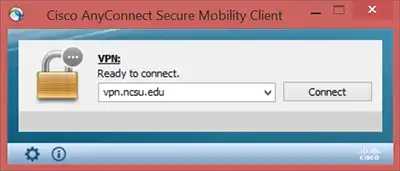
STEP 2: Remote Desktop
You can use Remote Desktop (RDP) to connect to a Windows PC from another device. If you have a Windows computer, this tool is pre-installed as Remote Desktop Connection. Mac users can download the app from the Mac App Store.
- On Windows 10 or 11, type “Remote Desktop Connection” into the search bar at the bottom of your home page.
- A pop-up window will appear. Enter your PC’s hostname or IP address, then click Connect.
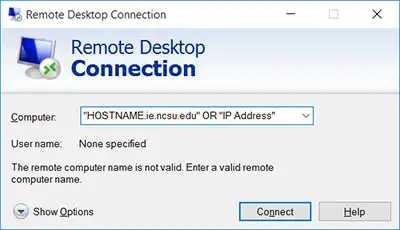
- Lastly, another window will ask for your Unity ID and password. Use “wolftech\unityID” as your username. After entering your credentials, click Connect. Your office PC desktop will then appear, allowing you to work remotely.

Connecting from Mac
Mac OS does not have Microsoft’s Remote Desktop Protocol (RDP) pre-installed, so you must install it yourself. First, go to the Mac App Store and download the Microsoft Remote Desktop application. Once installed, open the app and follow the necessary steps for remote access. This tool allows you to connect to your office machine from anywhere.

Office Printer Connection Instructions
Every OR networked printer has a hostname based on a North Carolina city or town. You can find this hostname on a label on the printer.

To install a printer, follow the instructions for using the CityName.ie.ncsu.edu domain name. OR PRO TIP: These steps apply only to student-owned computers. You should already have access to the print queue if you use an ISE-owned PC. If you cannot find a printer, email isehelp@ncsu.edu with your computer’s hostname for help.
Connecting from Windows
- Using the Start Menu, search “Control Panel,” then select Devices and Printers.
- In the Devices and Printers window, click on Add a printer.
- Select The printer that I want, which isn’t listed.
- Choose Add a local printer or network printer with manual settings, then click Next.
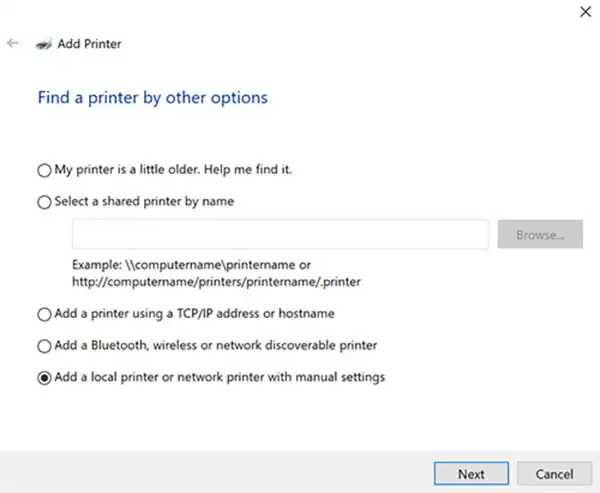
- Select Create a new port, choose Standard TCP/IP Port, then click Next.
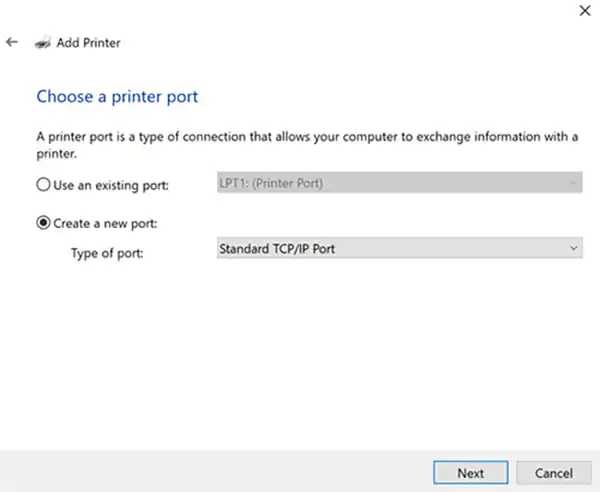
- Under Hostname or IP address, type in the hostname followed by “.ie.ncsu.edu”. For example, the hostname of this printer is Raleigh, so you would enter “raleigh.ie.ncsu.edu.”
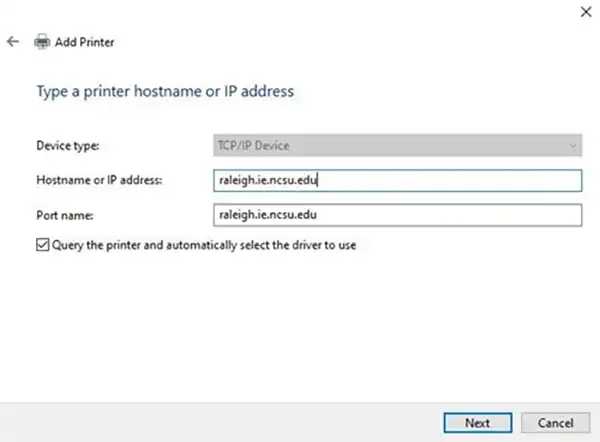
- Windows should find the driver automatically. (Note for Brother branded printers: “Brother PS Driver” should be selected.)
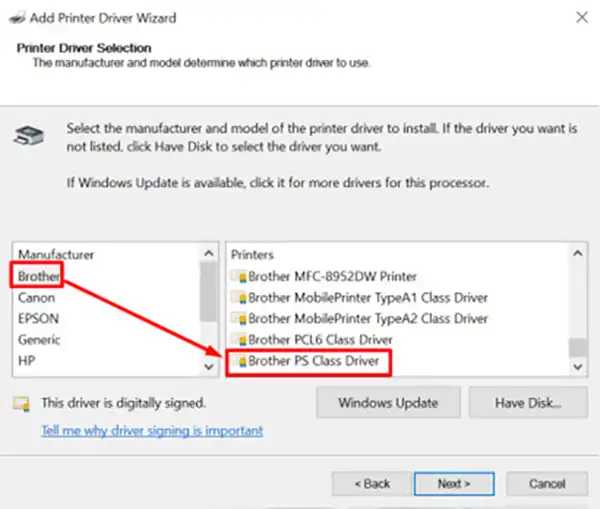
- Once it finds the driver, type in the printer’s name (this can be whatever you want to call it), then click Next.
- Select Do not share this printer in the Printer Sharing window, then click Next.
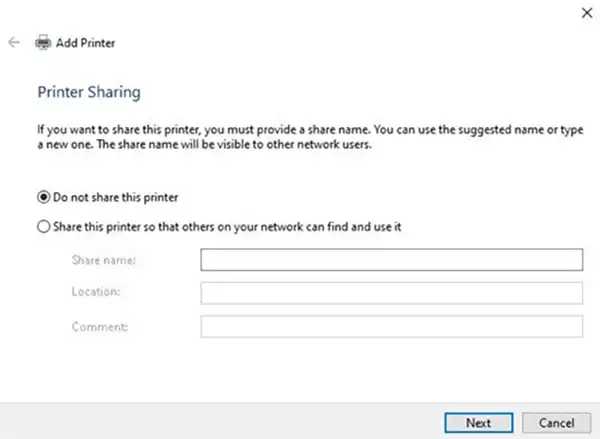
- If you want this printer to be your default, select the Set as the default printer box. It is a good idea to print a test page to make sure it works. Once the test prints successfully, click the Finish button. The printer should now appear in Devices and Printers. You can select it whenever you print from a document or another application.

Connecting from a Mac
If a network printer you want to use isn’t available, you can add it as an IP printer. Ensure you have the most up-to-date software installed before moving forward.
- Choose Apple Menu, System Preferences and then select Printers & Scanners.
- Click the Add button at the bottom of the printer list, click the IP button, and then enter the printer information using the following information as a guide.
- To set up your printer’s Address, enter the hostname followed by “.ie.ncsu.edu” (for example, raleigh.ie.ncsu.edu).
- Next, click the Protocol pop-up menu and select Internet Printing Protocol (IPP), which most modern printers support.
- If your printer requires a Queue name, enter it. If you are unsure, leave it blank or ask your network administrator.
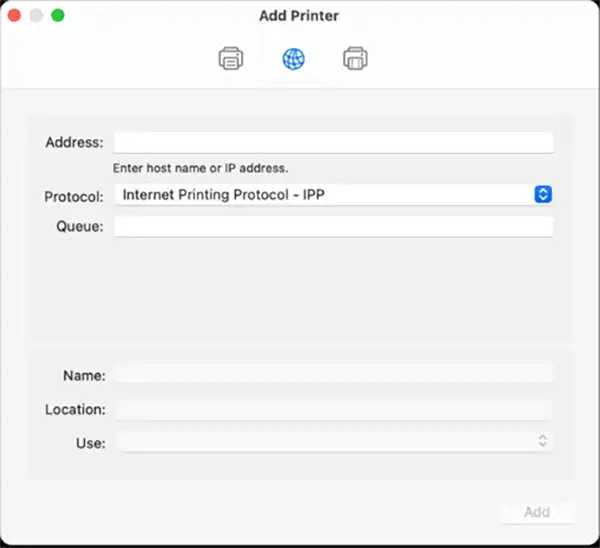
- In the Name field, type a descriptive name, like “Color Laser Printer,” to help you identify it. For Location, enter details like “outside my office” to find it easily in the printer menu.
- If the correct software does not appear in the Use menu, select Select Printer Software, then choose your printer from the list.
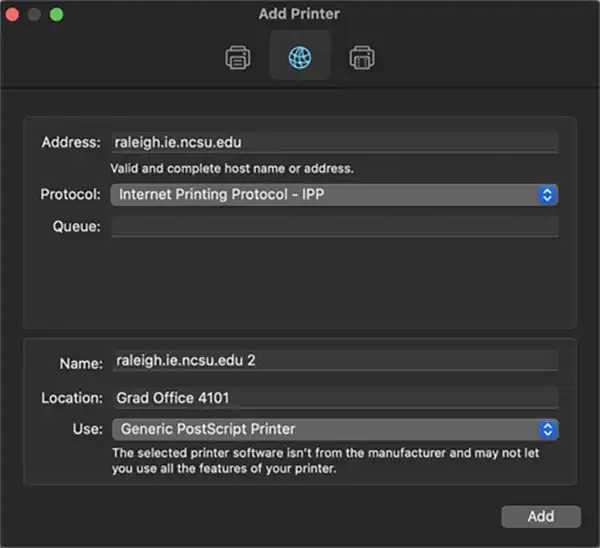
- Your printer should now be connected to the printer.
Additional Computing Services
HPC via VCL
You can access High-Performance Computing (HPC) through the Virtual Computing Lab (VCL) for research and academic needs. VCL provides students and faculty remote access to Virtual Machines (VMs) for different tasks. The ISE department offers HPC VMs for specialized computing needs that do not fit NC State’s main HPC system.
NC State HPC
NC State’s HPC group supports research and academic computing with entry- and medium-level HPC facilities and consulting and workflow assistance. If you need HPC access for your project, visit projects.ncsu.edu/hpc.
Storage Resources
NC State also provides various data storage resources for different needs, including productivity files, research computing, and general storage. These options ensure secure and accessible data management. To explore storage solutions, visit the OIT Storage Resource Summary page.
To learn more about OIT’s storage resources, go to OIT Storage Resource Summary.
